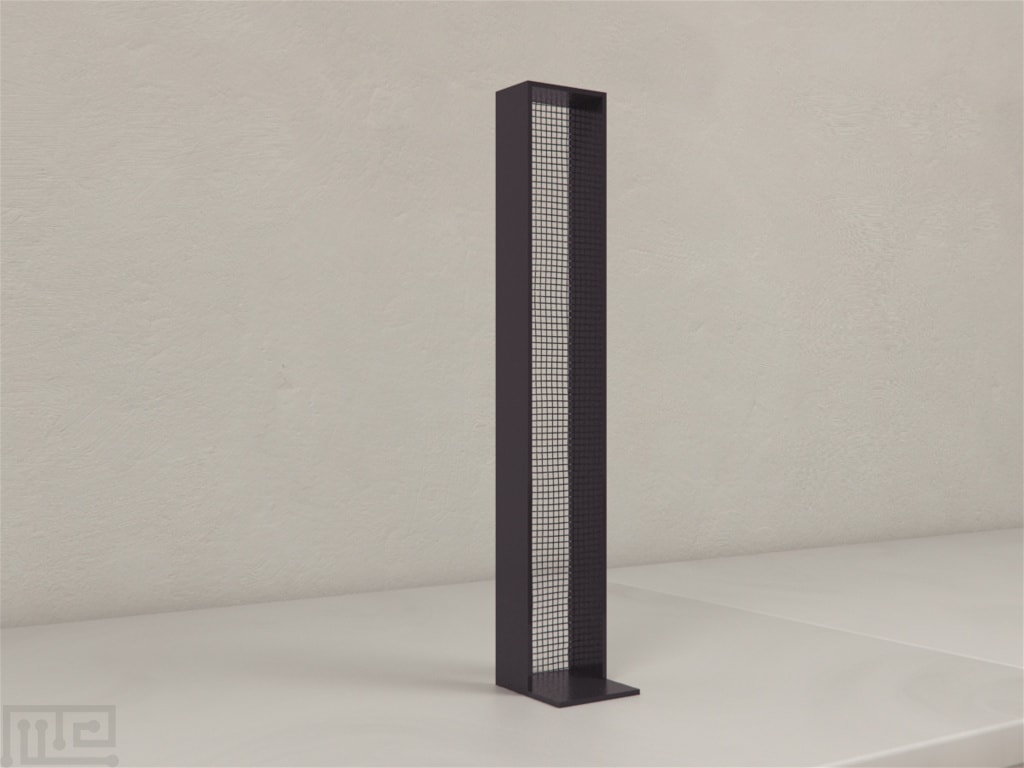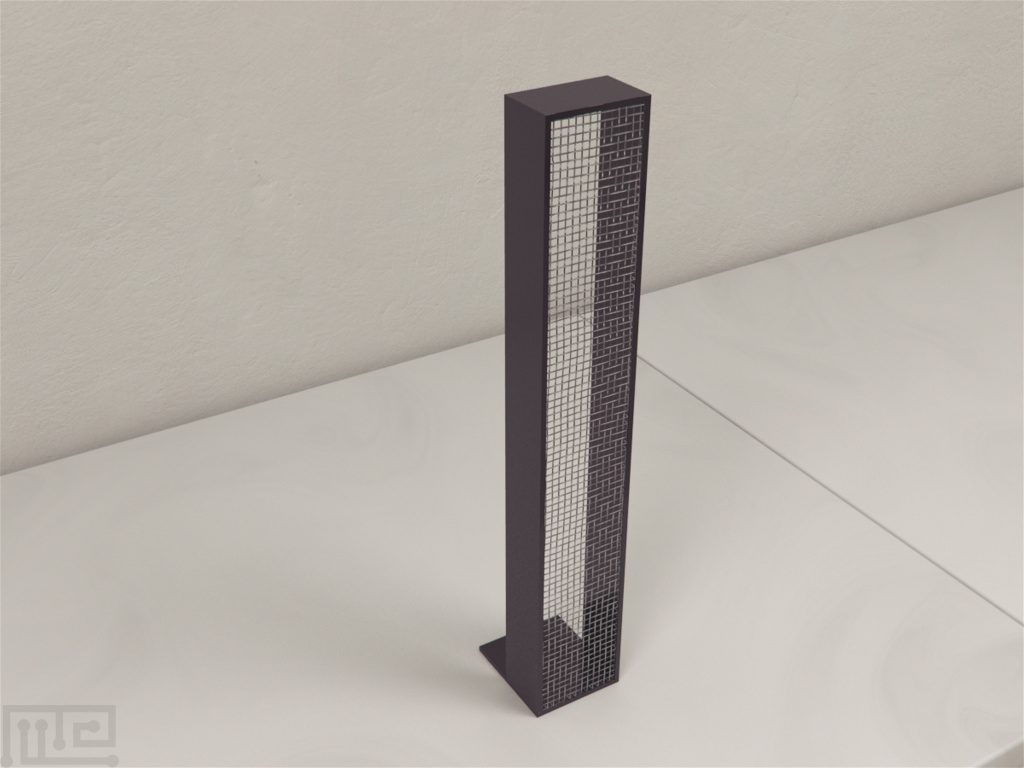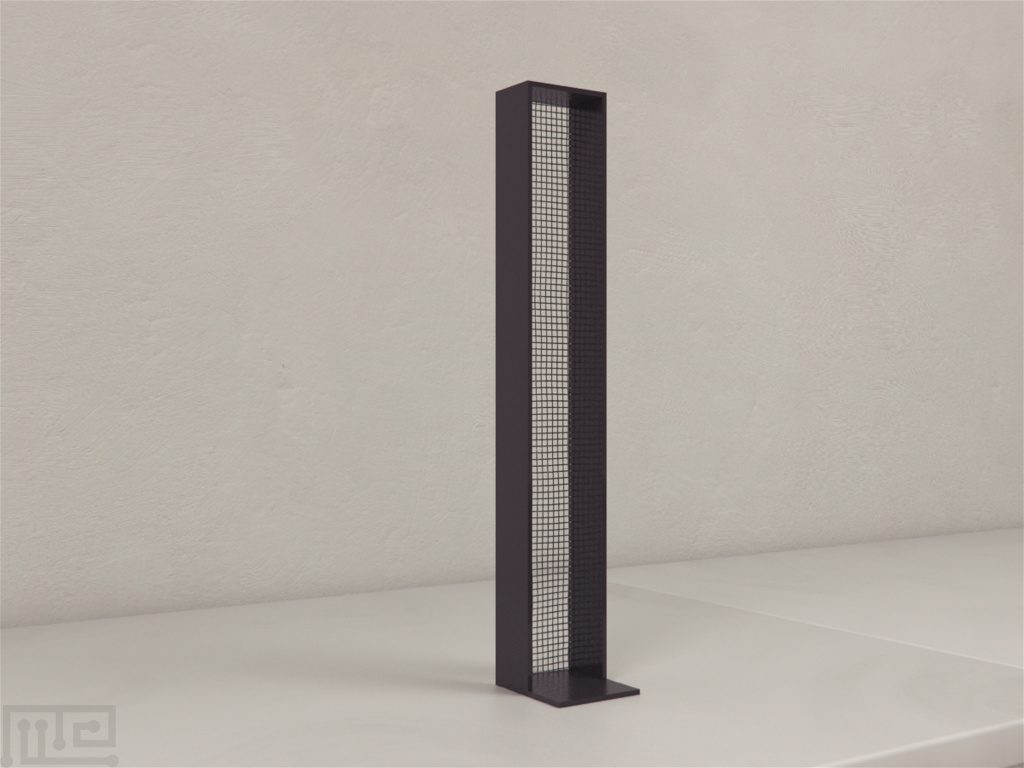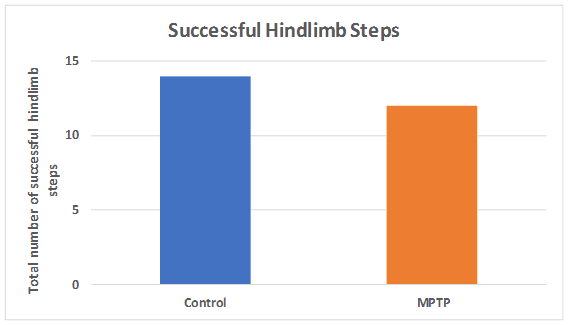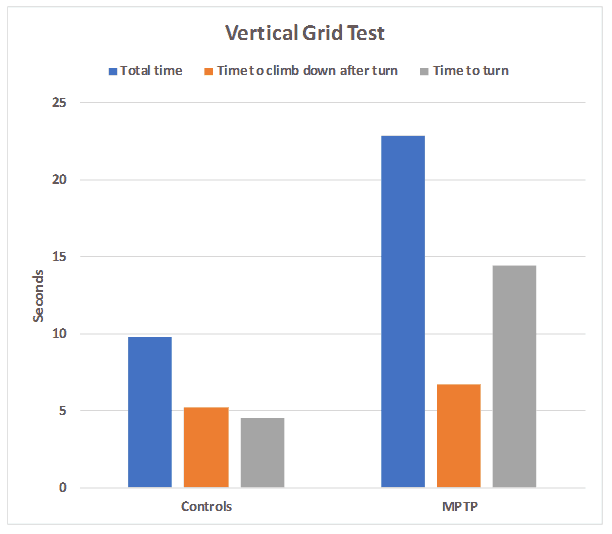The vertical grid test is similar to the horizontal grid test first described by Kim et al (2010) to assess motor function. The apparatus is a vertically positioned grid box mounted with acrylic, and this allows the mouse to grab on the grids as it climbs down. The MazeEngineers vertical grid apparatus allows simple motor assessment, is lightweight, and available for mice and rats. Multiple colors available.
Price & Dimensions
Mouse
$ 590
Per Month- Total Size: 8 cm×55 cm× 5 cm (L x W x H)
- Wire Mesh: 0.8cm x 0.8cm
- Open front, 4 sides of black acrylic. Bottom with 5cm foot for stability
Rat
$ 690
Per Month- Total Size: 12 cm×85 cm× 8 cm (L x W x H)
- Wire Mesh: 0.1cm x 1cm
- Open front, 4 sides of black acrylic. Bottom with 7.5cm foot for stability
Documentation
Introduction
The Vertical Grid is a novel adaptation of the Horizontal Grid test by Kim et al., 2010. Along with other tests such as the Horizontal Grid test and Gait test, the Vertical Grid test can be used to understand motor impairments, and in evaluating the effects of pharmacological compounds. The Vertical Grid test combines the advantages of the Horizontal Grid test and Pole test into a single apparatus. The compact design of the vertical grid offers optimal stability, unlike Horizontal Ladder test. The start and goal box that supports the ladder rung does not provide maximum balance to the assembly of the horizontal ladder. Therefore, the Vertical Grid test can make a good alternative to the widely used Horizontal Ladder test.
Animal models of diseases such as Parkinson’s disease and Huntington’s disease allow deeper assessments of the disease-related motor dysfunctions. Since the muscles work in tandem with other systems in the body, the animal models play a crucial role in evaluating the condition and the effects of treatments.
Apparatus and Equipment
The Vertical Grid apparatus consists of an open box having dimensions 8 x 55 x 5 cm. A wire mesh of 0.8 x 0.8 cm grid openings is set on the back of the box, while the front is open. The sides of the apparatus are made of black Plexiglas. An extension of 5 cm at the bottom of the apparatus provides stability.
Training Protocol
The Vertical Grid apparatus is cleaned before and after every experiment. The apparatus is well-lit. Automated tracking and recording software such as Noldus Ethovision XT can be used to assist with the scoring.
The general procedure involves placing the subject 3 cm from the top, facing upwards. The subject is allowed to turn and climb down. Trials are repeated if the subject fails to climb down within 60 seconds. Prior to the experiment, subjects are allowed to acclimate to the Vertical Grid 3 times per day for 2 days.
Evaluation of effects of 1-methyl-4-phenyl1,2,3,6-tetrahydropyridine (MPTP)
The subjects are administered 20 mg/kg MPTP dissolved in saline intraperitoneally four times at 2-h intervals. After 6 days, the subjects are tested on the Vertical Grid to assess motor deficits. (Kim et al., 2010)
Sample Data
The following data is collected during the Vertical Grid test.
- Time taken to turn: Time taken by the subject to make a turn from the facing-up position to facing-down position on the apparatus.
- Time to climb down: Time taken by the subject to climb down after it has made the turn. This is calculated by subtracting the time taken to turn from the total time.
- Total time taken to climb down: Time taken by the subject to make a turn, climb down, and reach the floor by its forepaw.
- Total number of successful hindlimb steps: A step is considered successful if a hind paw step is made in front of the other hind paw.
Strengths & Limitations
Strengths
The Vertical Grid test combines the advantages of the horizontal grid test and the pole test. The Vertical Grid test is beneficial in demonstrating muscular dysfunction and in evaluating drug effects. The test can also be extended to age-related neuromuscular decline and used in understanding nerve regeneration/damage. The apparatus is simple to use and light-weight.
The compact design of the vertical grid offers optimal stability, unlike Horizontal Ladder test. The start and goal box that supports the ladder rung does not provide maximum balance to the assembly of the horizontal ladder. Therefore, the Vertical Grid test can make a good alternative to the widely used Horizontal Ladder test.
Limitations
Repeated trials on the Vertical Grid will cause muscle fatigue in the subjects. The subject’s performance is also dependent on its weight. Thus, it is important to have a large cohort of similar weights to obtain reliable results. It is important to allow rest periods between each trial. Factors such as the age and sex can also affect the performance.
Summary and Key Points
- Vertical Grid test combines the advantages of the Horizontal Grid test and Pole test.
- The Vertical Grid test assists with the evaluation of neuromuscular strength and coordination in rodents.
- The test doesn’t require any stimuli as rodents are known to grip on to materials instinctively.
- The subject’s performance is also dependent on its weight.
- The Vertical Grid test can make a good alternative to the widely used Horizontal Ladder test.
References
Kim ST, Son HJ, Choi JH, Ji IJ, Hwang O (2010). Vertical grid test and modified horizontal grid test are sensitive methods for evaluating motor dysfunctions in the MPTP mouse model of Parkinson’s disease. Brain Res. 1306:176-83. doi: 10.1016/j.brainres.2009.09.103.

